- Local Time: 04:38 AM
- Weather: 12 ℃ / 54 ℉
King Menes, also known as Narmer, was the founder of Egypt’s First Dynasty and the unifier of Upper and Lower Egypt around 3150 BCE. Renowned for his military and political leadership, he established Memphis as the capital and introduced centralized governance rooted in the concept of ma’at (harmony and balance). The article highlights his achievements in administration, religion, and culture—especially his role in developing writing and urban life. It also examines the Narmer Palette as a symbolic record of Egypt’s unification, explores his family ties, and discusses his burial at Umm el-Qa’ab. Though his mummy remains undiscovered, Menes’ legacy endures as a foundational figure in ancient Egyptian civilization.
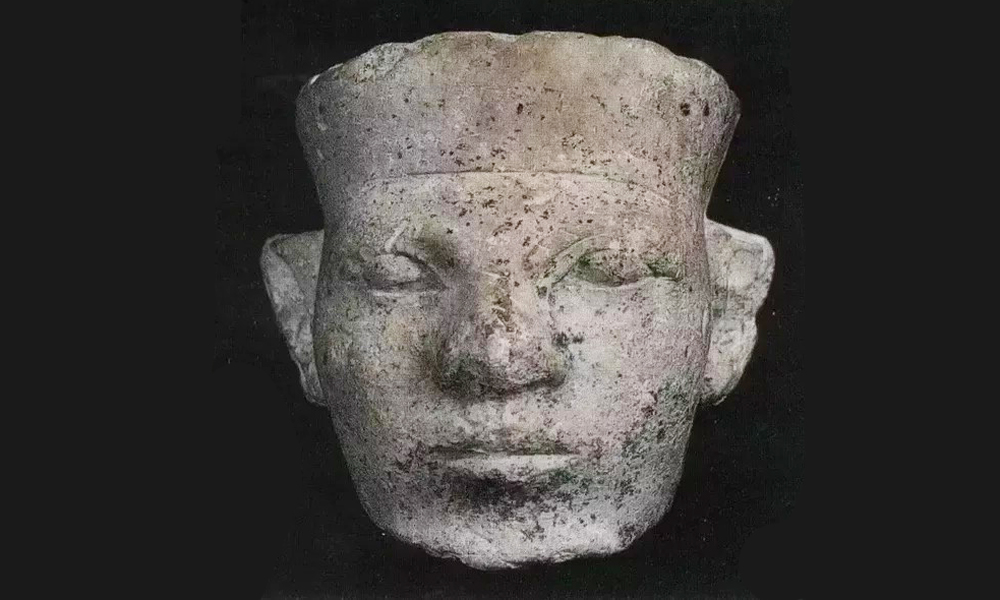
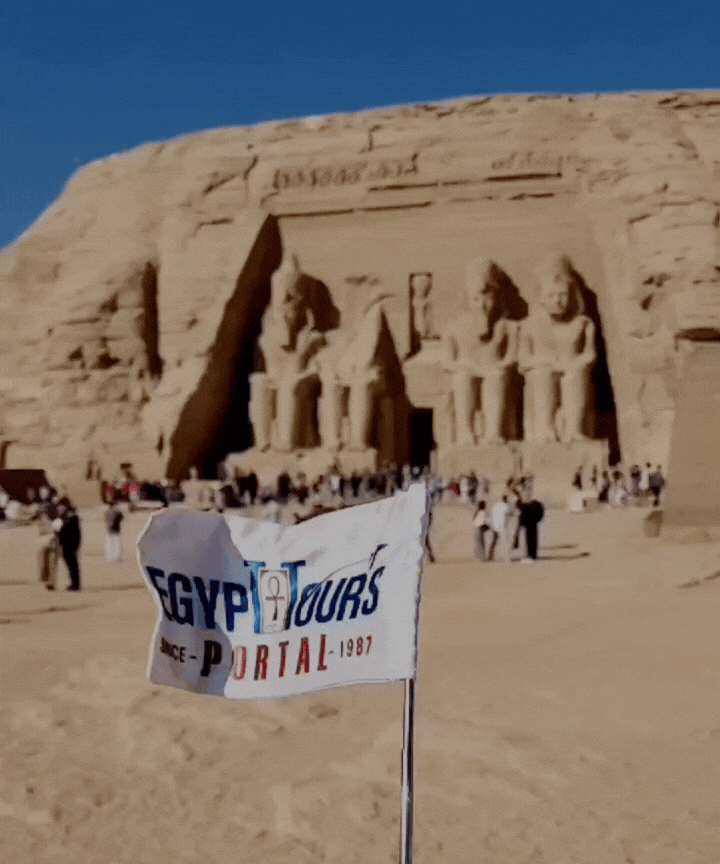
King Menes is revered as ancient Egypt’s first pharaoh and the unifier of Upper and Lower Egypt, establishing the First Dynasty and laying the foundation for one of history’s most influential civilizations. He was renowned for both his military skill and strategic wisdom. Menes built the city of Memphis as Egypt’s capital, positioned advantageously near the Nile Delta, and established religious traditions that embodied the principle of ma'at, representing harmony and balance.
His legacy, blending history and myth, depicts him as a divine hero who brought order from chaos, initiating Egypt’s dynastic era and an enduring period of prosperity. This will seek to show all the elements that made Pharaoh Menes a pivotal character in the history of Egypt.

"King Menes" is the founder of the 1st dynasty in the history of ancient Egypt and the last king of the predynastic period (6000-3150 BCE). In 3150 B.C., he was able to unify both upper and lower Egypt, as shown on the legendary Narmer Palette. His name means "The One Who Endures" and his reign lasted for 62 years. He married a princess to consolidate his power, Princess Neithhotep of Naqada. Many believe he inherited the throne from the god of victory and protection Horus.
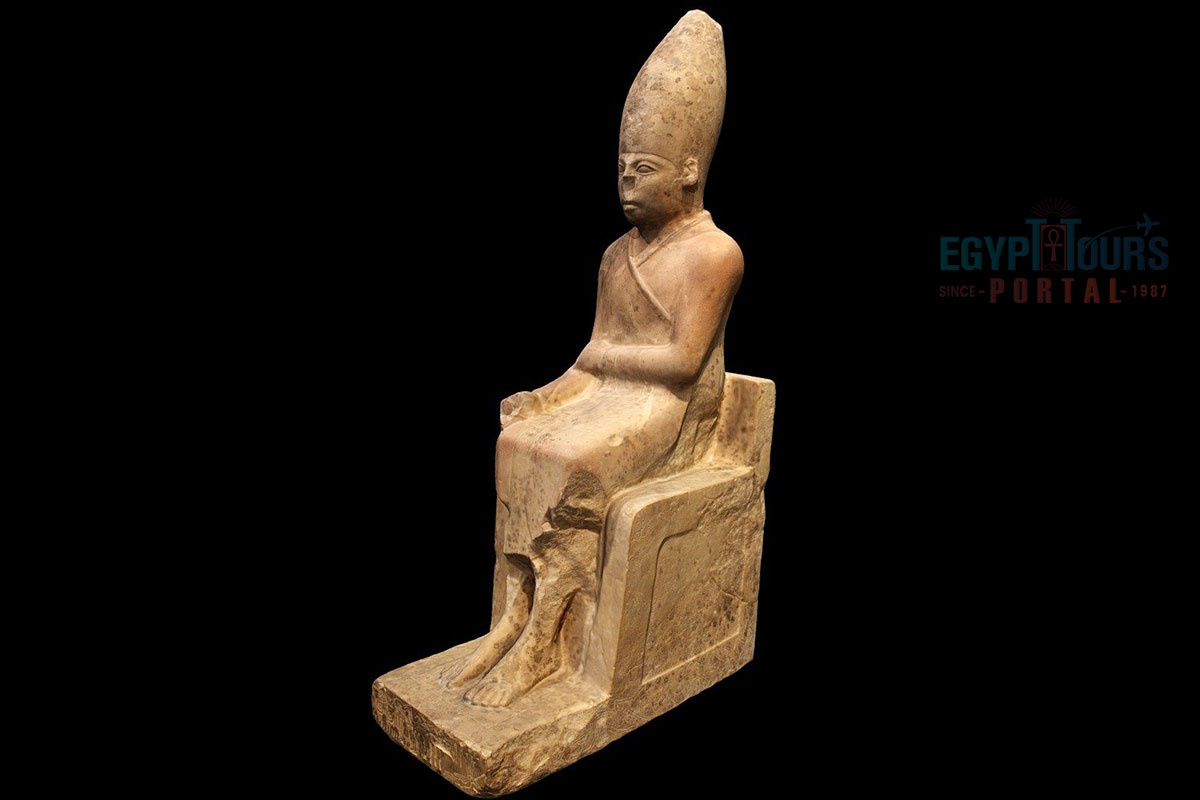
Before that period Egypt was divided into two kingdoms; Upper Egypt in the South and Lower Egypt in the north, there was a crowned king for each part and a series of wars between them, until "King Menes" the king of Lower Egypt put an end to that and defeated the king of upper Egypt and crowned himself as a king of the two lands both upper and lower Egypt and created the first centralized monarchy. After the unification of both lands, "King Narmer" changed the capital of Egypt to be in Abydos.
He sends many military expeditions all across Egypt and neighboring countries such as Cannan and Nubia. He built new cities like the city of Memphis, a new wave of urbanization spread through ancient Egypt, and a great deal of attention was put on developing the art of writing. He is noted for developing the notion of luxury as the Egyptians created many lavish hobbies to fill their time after uniting the land such as sports, brewing beer, carving, sculpting, cultivating gardens, and various others.
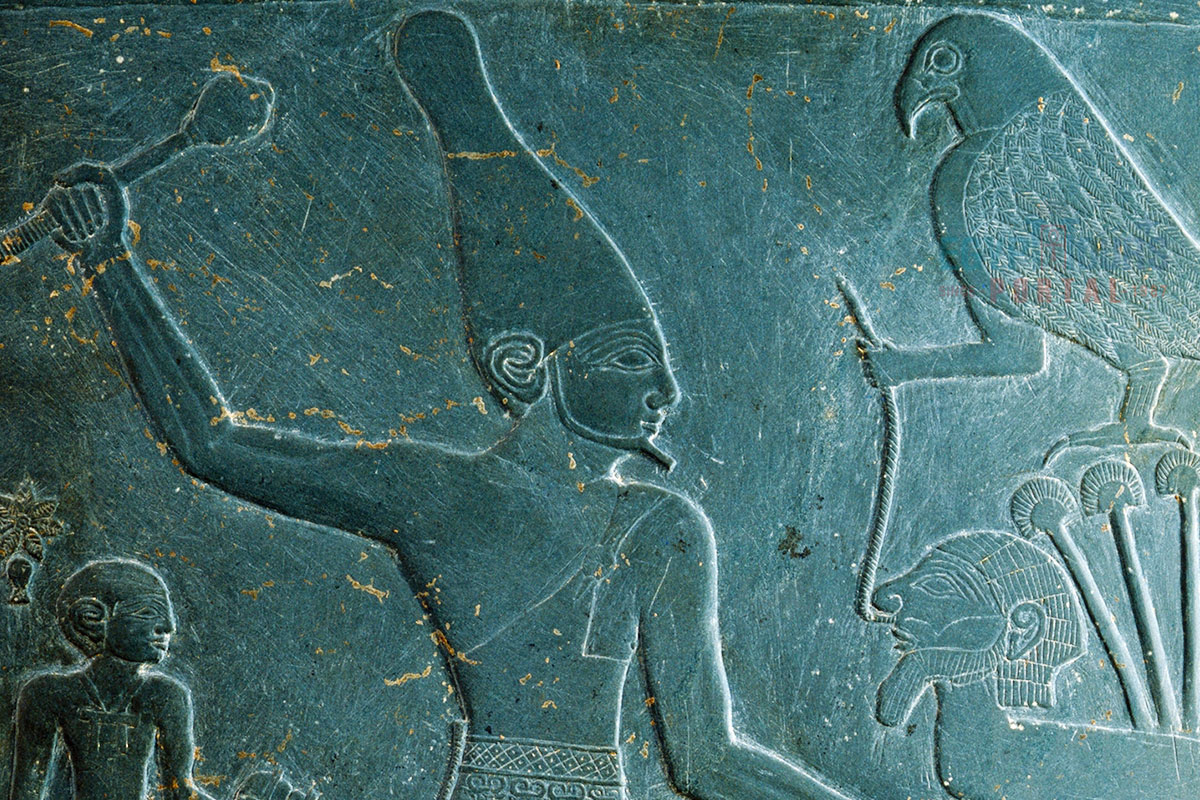
King Menes is widely celebrated as the legendary unifier of Egypt, believed to have established the First Dynasty and initiated an era of Egyptian stability around 3150 BCE. He is traditionally recognized for consolidating Upper and Lower Egypt, transforming a previously divided region into a unified kingdom. According to early sources like Manetho’s Chronology, the Turin King List, and the Palermo Stone, Menes was Egypt’s first ruler.
However, the identity of Menes has long been debated by historians and archaeologists, with many now associating him with Narmer, an early dynastic king whose unification of Egypt is immortalized on the Narmer Palette, a significant artifact in ancient Egyptian history.
Menes’ symbolic role extended beyond political unity; he is said to have established Memphis as Egypt’s capital, diverted the Nile river for its construction, and instituted foundational laws and religious practices. His legacy as the “First King” of a united Egypt marks the start of an era that eventually evolved into one of the world’s most influential ancient civilizations.
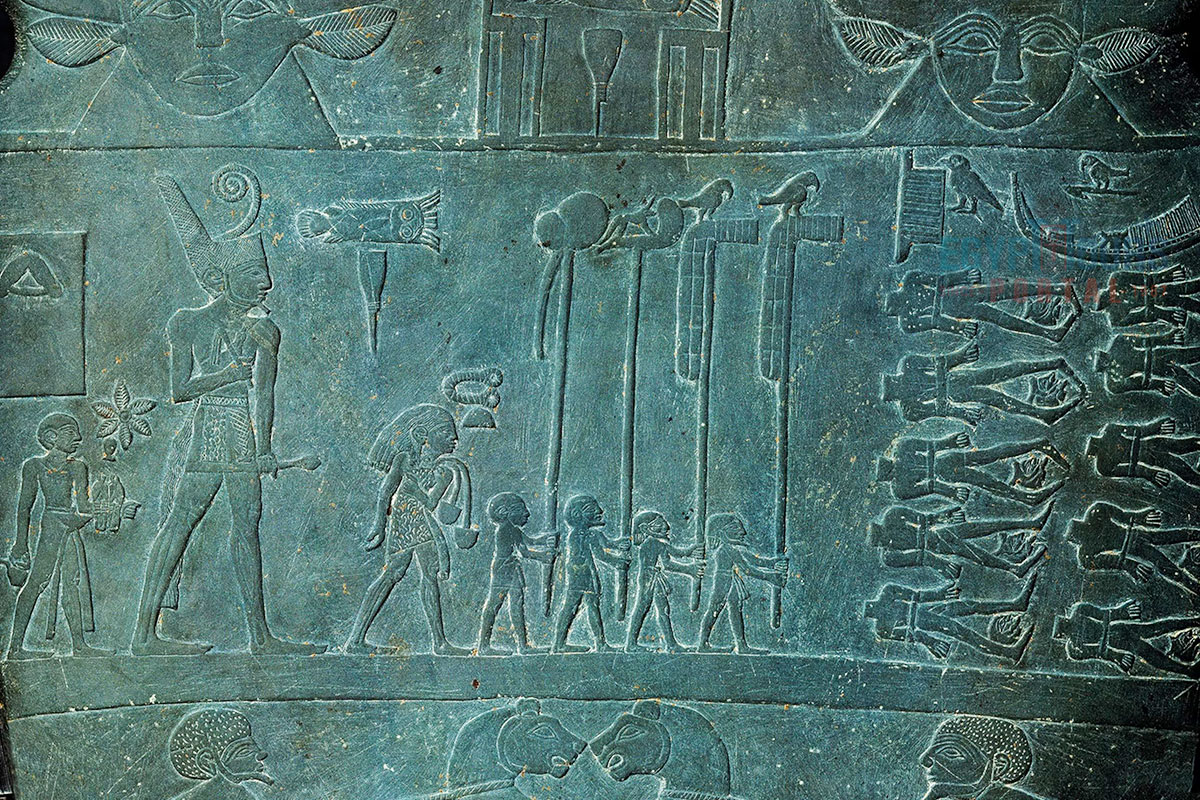
The exact details of Menes’ family remain uncertain due to limited historical records. Some accounts suggest he was born in the ancient city of Thinis or Hierakonpolis in Upper Egypt, two early political centers. Scholars hypothesize that Menes could be the father of Hor-Aha, another prominent early pharaoh who continued consolidating Egypt’s authority and expanding its borders.
Menes' association with Queen Neithhotep, often considered Narmer's consort or Hor-Aha's mother, adds complexity to his family legacy. Queen Neithhotep is believed to have played an essential role in Egypt’s early dynastic period, further securing the unification through alliances. While the details of his lineage are sparse, Menes' legacy continued through the powerful leaders of the First Dynasty.
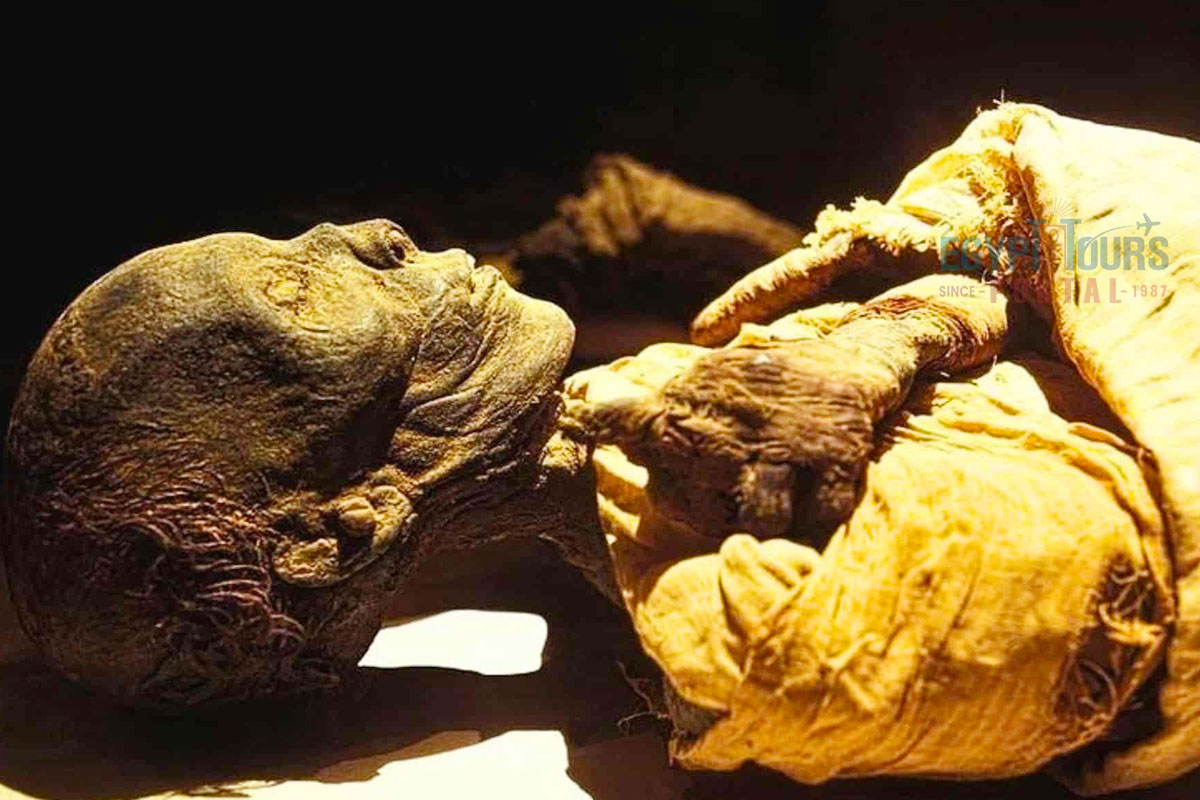
Menes' birth is estimated around 3150 BCE, though exact dates remain uncertain. Born in the Predynastic period, he likely hailed from a powerful ruling family in Upper Egypt. His early life details are mostly speculative, but he rose to power at a time when Egypt’s regions were often in conflict.
His reign is marked by the celebrated unification of Egypt’s northern and southern territories, symbolizing order over chaos. Menes’ death is shrouded in myth, with some sources claiming he was killed by a hippopotamus. This creature held significant symbolic meaning in Egyptian mythology, representing chaos and destruction, and Menes’ death at its hands may have reflected cultural beliefs in the cyclical struggle between order and disorder.

Ancient Egyptian Artifacts linked to Menes include the Narmer Palette, a ceremonial siltstone tablet depicting King Narmer’s triumph over Lower Egypt, widely considered a representation of Menes’ accomplishments. The Naqada Label and Abydos Seal Impressions also mention the name Menes, though their interpretations remain debated.
Another significant artifact is the ivory label from Naqada, featuring the mn hieroglyph associated with Menes, alongside a structure, possibly his shrine. Additionally, Menes is listed in the Abydos King List and Turin King List, key records of Egypt’s royal lineage. These artifacts provide fragmented yet insightful evidence of Menes' existence, symbolic achievements, and the cultural memory surrounding his rule.
"King Menes" commemorated the victory of upper Egypt over lower Egypt in his famous palette called Narmer Palette, which is made out of schist and discovered from Hyracnopolice {El Kom El Ahmar } about 22 Km East of Cairo. This palette has been transferred to the Egyptian Museum in Cairo and then moved to the Grand Egyptian Museum, so start your trip to Egypt by visiting the museum and watching the palette.
Narmer Palette consists of two sides called recto and verso, on both sides, we can see the name of King Narmer is written in a small square as "Ne3Rmer", the name is protected from both sides by the famous face of the Cow Hathor, the deity of love, harmony, and motherhood. On "The Verso" side of the palette of Narmer is Menes wearing the red wicker war crown of Upper Egypt, which indicates that all of Egypt has fallen under his control.
The largest engravings on the palette are two men interweaving serpentine necks of unknown beasts called serpopards. At the bottom of the palette is king is shown as a bull breaking through the walls of the city with horns and trampling his enemies beneath his hooves. There is also a priest wearing a leopard skin following four divine standards.
On the other side of the palette, "The Recto" is a complete cohesive of Narmer with his army gathering about to strike down an enemy captured by the hair, and beneath his top feet are two men either dead or attempting to escape his wrath, plus behind the king, there is a bald servant holding his sandals while in front of him is the sky god Horus watching and blessing king Narmer's victory by bringing many enemy prisoners.
Both sides of the palette are decorated with animal heads at the very top with cows and bulls that are associated with the goddess Hathor of celebration and joy which is shown as a cow or a woman with a cow's ears and the bull is a symbol of the king's strength and vitality.
Discover the secrets and epic history of Narmer Palette
Read More
When Egypt achieved unification under King Menes in 3150 BC, often associated with the name Narmer, his reign marked the dawn of a prosperous and culturally rich era. His name means "The One Who Endures". As the first ruler of a united Egypt, he is credited with establishing foundational religious practices and formalizing beliefs that would become deeply ingrained in Egyptian society for millennia.
Menes’ unification of Upper and Lower Egypt was more than a political accomplishment; it represented a monumental shift in the cultural and spiritual life of the Egyptian people. Recognizing the importance of maintaining ma'at—the Egyptian concept of harmony and balance—Menes sought to integrate diverse local customs into a coherent national identity, laying the groundwork for a centralized state and shared religious practices.
During his prosperous rule, which is estimated to have lasted around 62 years, Menes encouraged not only governance and religious observance but also the development of various forms of cultural expression. His reign became known as a time when arts and crafts flourished.
Menes actively promoted hobbies and activities that enriched daily life, including carving, sculpting, athletics, and other forms of physical and creative pursuits. These activities were more than mere pastimes; they contributed to a thriving economy, as artisans began to develop sophisticated techniques that would define Egyptian art.
Sculptors and craftsmen honed their skills under royal patronage, producing intricate artifacts and statues that celebrated the gods, honored the pharaoh, and decorated temples and public spaces. In addition to artistic advancements, Menes is thought to have promoted early forms of organized sports, recognizing the value of physical fitness and leisure as part of Egyptian life.
Such activities fostered community spirit and were often associated with religious festivals and ceremonies, reinforcing the social fabric and shared beliefs of the people. The growth of these activities under Menes' leadership helped shape a culture that celebrated creativity, physical endurance, and religious devotion.
The flourishing of Egypt under Menes’ rule, in terms of economic stability, religious unity, and cultural richness, laid a strong foundation for successive dynasties. His reign not only unified a land previously divided but also established the enduring legacy of pharaonic leadership, in which the king was seen as a divine figure responsible for maintaining the balance of life and prosperity for all Egyptians.

The tomb attributed to King Menes, often associated with the pharaoh Narmer, is located in the ancient necropolis of Umm el-Qa’ab near Abydos in Upper Egypt. This necropolis was one of the most revered burial grounds of early Egyptian rulers, symbolizing a sacred connection between Egypt’s early kings and the god Osiris, the deity of the afterlife. Umm el-Qa’ab, meaning "Mother of Pots" due to the countless votive pottery fragments left there by ancient pilgrims, served as the final resting place for some of Egypt’s earliest dynastic rulers and remained a significant spiritual site throughout ancient Egyptian history.
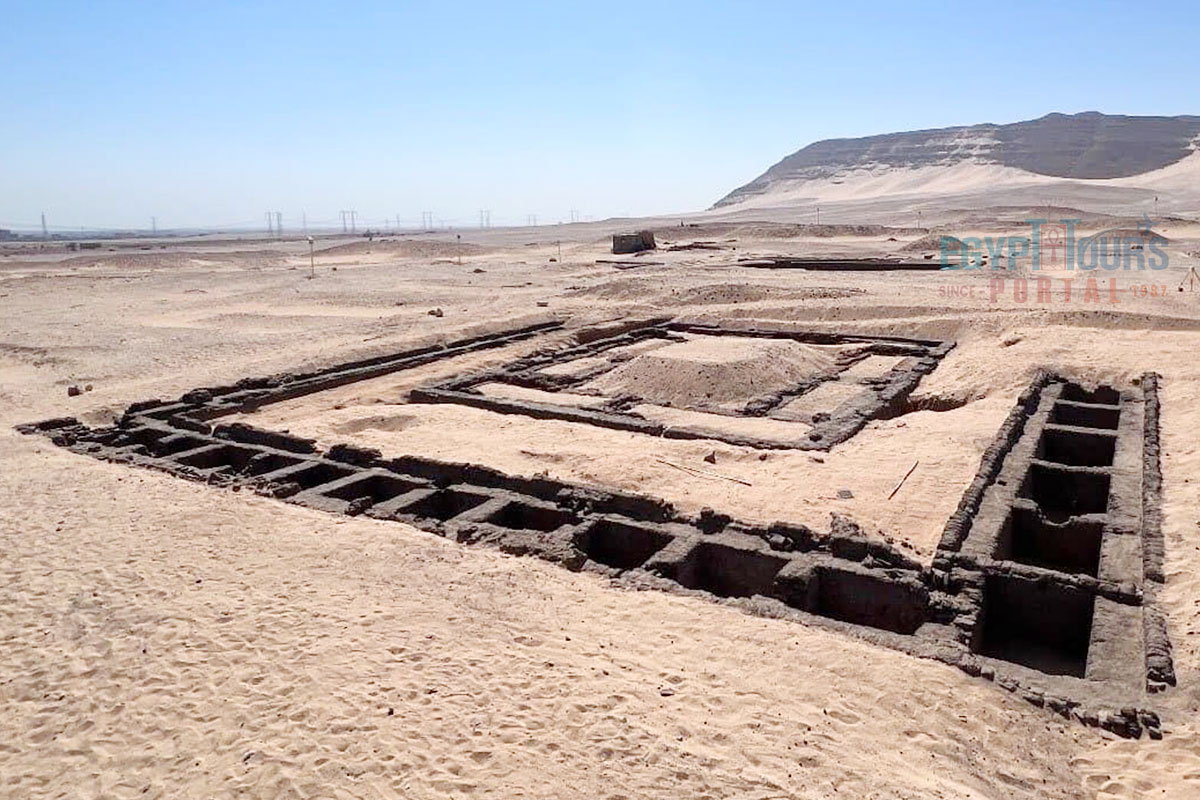
King Menes' tomb at Umm el-Qa’ab is relatively modest by the standards of later Egyptian kings but reflects the architectural techniques and funerary practices of the early dynastic period. The structure consists of two interconnected chambers, both constructed from mud bricks, a common material used during this era before the introduction of stone architecture. Mudbrick was readily available and relatively easy to shape, enabling the builders to form solid walls and arches that could withstand the region’s dry climate.
The tomb’s layout was designed not only as a place of burial but also as a symbolic representation of the king’s role in the afterlife. The chambers were carefully aligned and built to accommodate essential burial goods believed to be necessary for the king’s journey in the afterlife.
The design is simple yet functional, with the two chambers likely serving distinct purposes: one as the burial chamber and the other as a storage space for offerings and funerary goods. The tomb was designed to protect the body of the king and the artifacts buried with him, ensuring that he would have everything needed to maintain his royal status in the next life.
Within the tomb, two notable necropolis seals were discovered. These seals bear inscriptions that link the tomb directly to Menes as the ruler of the First Dynasty. The seals also depict symbols of royal authority and may have been used as markers to affirm the king’s identity and his status as Egypt’s unifier. Such inscriptions were essential in the early dynastic period, as they provided a connection between the king's earthly rule and his role in the afterlife, affirming his legacy for future generations.
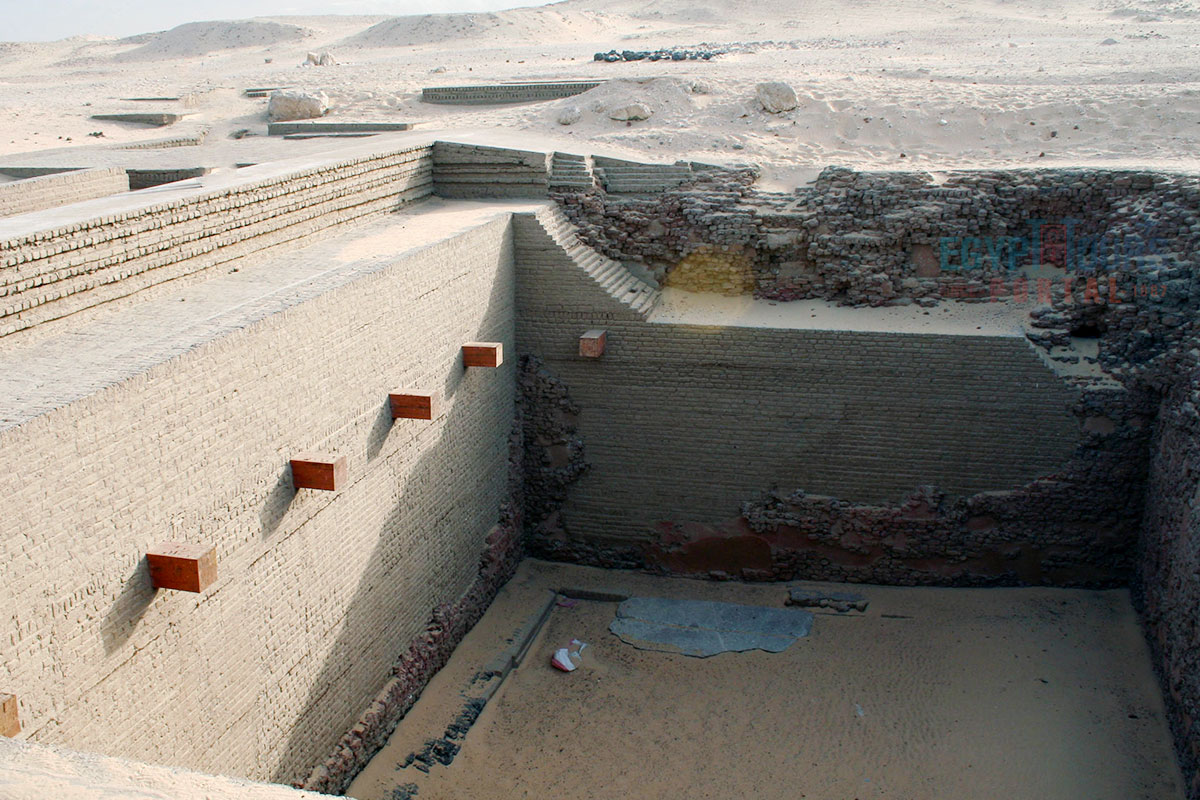
No confirmed mummy of King Menes has been discovered, likely due to the limitations in preservation techniques of the early dynastic period. Unlike later periods, when mummification had become an elaborate and perfect art form, the methods used during Menes' time were more rudimentary. These early techniques may not have fully preserved the bodies, which, coupled with the natural degradation over thousands of years, means that little trace of Menes’ remains has survived.
The tomb itself, however, provides valuable insights into the burial customs and the Egyptian view of the afterlife in the early dynastic period. The lack of a mummified body does not diminish the significance of Menes’ tomb; in fact, the tomb’s architectural and archaeological features speak to the reverence with which Egypt’s early rulers were treated.
King Menes' burial site and its offerings would have included items necessary for his journey in the afterlife, likely consisting of pottery, food offerings, small statues, and other personal effects. These items underscore the belief that the king, even in death, required sustenance and protection, mirroring his role as a provider and protector of Egypt during his life.
Menes’ tomb at Umm el-Qa’ab stands as an enduring symbol of Egypt's beginnings, marking both a physical and spiritual legacy. Its location in one of the earliest and most sacred royal burial sites underscores the importance of Menes in Egyptian history, serving as a monumental testament to his role in founding a unified Egypt.
To discover more about Egyptian Pharaohs, visit Egypt, "The Cradle of Human Civilization." Book your Egypt tour and witness the most historical landmarks in Egypt by embarking on a nile river cruise between Luxor and Aswan that makes every moment of your time worthy of remembering.
Private 4 Days Cairo Tour Packages for Irish Travelers 4 days Cairo Egypt Tour packa...
Tour Location: Cairo – Giza...
5 Days Cairo and Alexandria Tour Package For Irish Travelers 5 days Cairo and Alexan...
Tour Location: Cairo/Giza/Alexandria...
6 Days Cairo, Luxor & Aswan Tour Package For Irish Travelers 6 days Cairo, Luxor...
Tour Location: Cairo/Giza/Aswan/Luxor...
Amazing 7 Days Cairo and Hurghada Holiday for Irish Travelers 7 Days Cairo & Hur...
Tour Location: Cairo – Giza – Hurgh...
King Menes is considered one of ancient Egypt’s most pivotal figures, symbolizing unity and the foundation of Egyptian civilization. By uniting Upper and Lower Egypt, he set the stage for the centralized administration and continuity that defined ancient Egyptian society.
Menes also represented the principle of ma'at—the balance between order and chaos—that was integral to Egyptian ideology. His rule marked the beginning of Egypt's dynastic period and laid the groundwork for what would become one of the most influential cultures in history.
After Menes’ death, Egypt’s newly unified state continued to be strengthened by successive rulers of the First Dynasty, such as Hor-Aha. These early kings consolidated Egypt’s political structure, enhanced trade, and expanded Egypt's territories through military campaigns.
The royal titles and symbols introduced during Menes' time, like the sema tawy (the “Unification of the Two Lands”), became fundamental to Egyptian kingship. Although political struggles and regional conflicts periodically resurfaced, the unification initiated by Menes endured, with Egypt evolving into an advanced civilization marked by monumental architecture, complex religious beliefs, and lasting cultural achievements.
The entire country of Egypt deserve to be explored with its every heavenly detail but there are places that must be seen before any other such as the breathtaking Hurghada's red sea, The wonders of Cairo the pyramids of Giza, the great sphinx, the Egyptian Museum, Khan El Khalili Bazaar, the wonders of Luxor like Valley of the Kings, Karnak & Hatshepsut temple and the wonders of Aswan such as Abu Simbel temples, Philea temple, Unfinished obelisk and The Wonders of Alexandria like Qaitbat Citadel, Pompey's Pillar and Alexandria Library. Read more about the best places to visit in Egypt.
If you want to apply for a Visa On Arrival that lasts for 30 days then you should be one of the eligible countries, have a valid passport with at least 6 months remaining and pay 25$ USD in cash, as for the E-Visa for 30 day you should have a valid passport for at least 8 months, complete the online application, pay the e-visa fee then print the e-visa to later be presented to the airport border guard. You could also be one of the lucky ones who can obtain a free visa for 90 days. Read more about Egypt travel visa.
Egypt has a variety of delicious cuisines but we recommend “Ful & Ta’meya (Fava Beans and Falafel)”, Mulukhiya, “Koshary”, a traditional Egyptian pasta dish, and Kebab & Kofta, the Egyptian traditional meat dish.
The best time to travel to Egypt is during the winter from September to April as the climate becomes a little tropical accompanied by a magical atmosphere of warm weather with a winter breeze. You will be notified in the week of your trip if the Climate is unsafe and if any changes have been made.
You should pack everything you could ever need in a small bag so you could move easily between your destinations.
We have been creating the finest vacations for more than 20 years around the most majestic destinations in Egypt. Our staff consists of the best operators, guides and drivers who dedicate all of their time & effort to make you have the perfect vacation. All of our tours are customized by Travel, Financial & Time consultants to fit your every possible need during your vacation. It doesn't go without saying that your safety and comfort are our main priority and all of our resources will be directed to provide the finest atmosphere until you return home.
You will feel safe in Egypt as the current atmosphere of the country is quite peaceful after the government took powerful measures like restructuring the entire tourist police to include all the important and tourist attractions in Egypt. Read more about is it safe to travel to Egypt.
Wear whatever feels right and comfortable. It is advised to wear something light and comfortable footwear like a closed-toe shoe to sustain the terrain of Egypt. Put on sun block during your time in Egypt in the summer to protect yourself from the sun.
The best activity is by far boarding a Nile Cruise between Luxor and Aswan or Vise Versa. Witness the beauty of Egypt from a hot balloon or a plane and try all the delicious Egyptian cuisines and drinks plus shopping in old Cairo. Explore the allure and wonders of the red sea in the magical city resorts of Egypt like Hurghada and many more by diving and snorkeling in the marine life or Hurghada. Behold the mesmerizing western desert by a safari trip under the heavenly Egyptian skies.
There are a lot of public holidays in Egypt too many to count either religious or nation, the most important festivals are the holy month of Ramadan which ends with Eid Al Fitr, Christmas and new years eve. Read more about festivals & publich holidays in Egypt.
Egypt is considered to be one of the most liberal Islamic countries but it has become a little bit conservative in the last couple of decades so it is advised to avoid showing your chest, shoulders or legs below the knees.
Arabic is the official language and Most Egyptians, who live in the cities, speak or understand English or at least some English words or phrases. Fewer Egyptians can speak French, Italian, Spanish, and German. Professional tour guides, who work in the tourism sector, are equipped to handle visitors who cannot speak Arabic and they will speak enough English and other languages to fulfill the needs of all our clients.
The fastest way is a car, of course, a taxi. If you are in Cairo ride a white taxi to move faster or you could board the fastest way of transportation in Egypt metro if the roads are in rush hour.
The temperature in Egypt ranges from 37c to 14 c. Summer in Egypt is somehow hot but sometimes it becomes cold at night and winter is cool and mild. The average of low temperatures vary from 9.5 °C in the wintertime to 23 °C in the summertime and the average high temperatures vary from 17 °C in the wintertime to 32 °C in the summertime. The temperature is moderate all along the coasts.
It is the home of everything a traveler might be looking for from amazing historical sites dating to more than 4000 years to enchanting city resorts & beaches. You will live the vacation you deserve as Egypt has everything you could possibly imagine.









